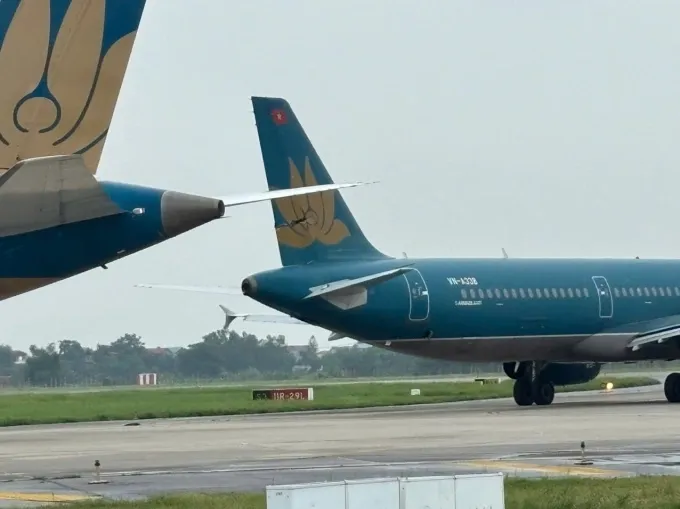Aircraft collision in Hanoi prompts Vietnam to take immediate action
The collision was reported at the intersection of taxiways S3 and S at Hanoi's Noi Bai International Airport.
THE HANOI TIMES — The Civil Aviation Authority of Vietnam (CAAV) has issued an urgent directive to aviation units nationwide, calling for strict flight safety measures.
The request came shortly after the collision of two Vietnam Airlines planes while taxiing at Noi Bai International Airport in late June.
The collision grounded both aircraft and forced hundreds of passengers to rebook.

Two planes collides in Hanoi in late June. Photo courtesy of the Noi Bai International Airport
According to the CAAV, a Boeing 787 taxiing to the runway for its flight to Ho Chi Minh City collided with the tail of an Airbus 321 waiting to take off for Dien Bien City.
Both planes were immediately grounded for technical inspection. There were no reported injuries among the 259 passengers on the flight to Ho Chi Minh City or the 127 passengers bound for Dien Bien. Visible damage to the wingtip of the Boeing and a tear in the vertical stabilizer of the Airbus were reported. Debris from both aircraft was scattered on the tarmac.
The four pilots have been suspended while the cause of the incident is investigated. The incident is rated level B on a scale of five.
The CAAV has instructed all relevant entities to strictly implement directives on maintaining aviation safety, as well as adhere fully to operational procedures and crew rest regulations.
Airlines in Vietnam have been asked to boost awareness campaigns among staff, especially pilots and air traffic controllers, regarding compliance with safety protocols.
Pilots must strictly adhere to standard operating procedures during critical flight phases, such as taxiing, taking off, and landing. While taxiing, they must be vigilant to identify key intersections, narrow taxiways, and high-traffic areas. If unsure about clearance from obstacles, pilots must immediately stop and inform air traffic controllers.
Airlines must strengthen flight supervision, conduct regular reviews of operational procedures, and promote continuous safety improvements.
Airport operators have been asked to intensify inspections of signage, ground markings, lighting systems, and taxiway indicators to ensure optimal safety and service readiness.
The CAAV stressed that all units must remain vigilant and proactive to ensure aviation safety amid unpredictable weather patterns.










